#samhuin
Text
Fairies, Turnips, and Ghost; oh my~!

During Samhuinn, while the veil is at its absolute thinnest, even the dead are said to walk with us. That lead to traditions, such as mumming and guising, but also carving turnips. That’s right, turnips.
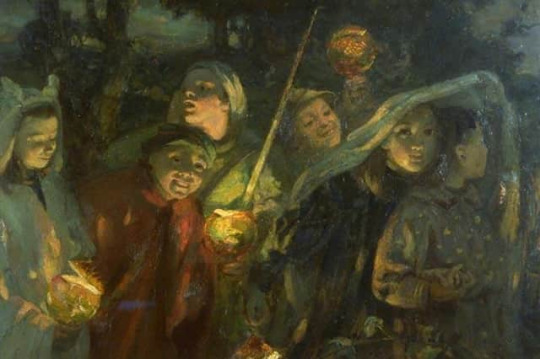
Neep lanterns. PIC: John Gray Centre, Haddington
While pumpkins might be the star of the show now, historically, it was turnips. Of course, they are much harder to carve, so it is no wonder that they were replaced. Turnips were carefully carved, lit with a candle, and carried about. These were called “neep lanterns.”
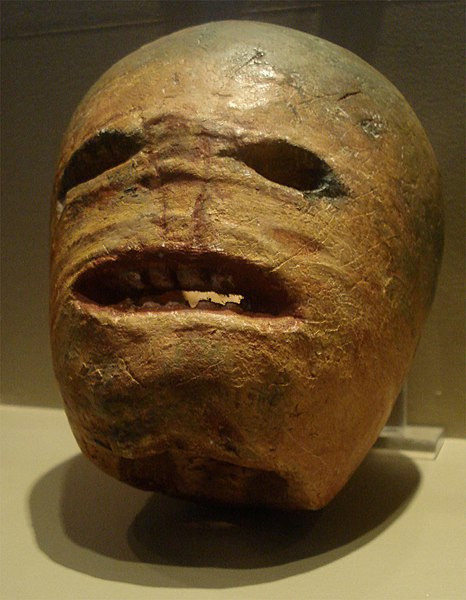
A traditional Irish turnip Jack-o’-lantern from the early 20th century. Photographed at the Museum of Country Life, Ireland.
It was not all scary, however. This was also the time to be visited by missed loved ones, so people would welcome them in with a warm fire, and food a drink just for them.
"All over Europe, the souls of the departed were believed to revisit their old homes on the eve of Allhallows and warm themselves at the fire or regale themselves with the food and drink left out for them by their kinsfolk."
The Silver Bough: Volume 1 by F. Marian McNeill (1957-1968)
Also out and about, however, were fairies, and they showed themselves in all sorts of ways.
"Mysterious lights, that have no apparent association with future events, are said to be seen periodically at certain places. One such light, it is said, appears on the Beacon Rock at the entrance of Loch Toscaig, in Applecross, on Hallowe’en night, and has done so from time immemorial."
"Folk-Lore from the West of Ross-shire" By Rev. C. Robertson(1905)
An example of this is the story of the man and the fairy mound that was once told all over Scotland with various tiny changes. I will do my best to merge them in this brief overview.
Two men are on their way home at night on Halloween when they see a dwelling open with warm lights, music, and dancing within. Without any hesitation, one of the men strides right on in to join in with the fun, while the other is suspicious. During his hesitation, the door closes, trapping his friend inside.
Because of the mysterious circumstances, everyone put the blame on him for his friends disappearance, and even suggested murder.
A whole year passed by, and when Halloween came again, there was his friend, still dancing, though, half-dead with fatigue. To save him, the young man puts an iron needle in the door, which will kept the magic from closing it on him, and stepped in to rescue his friend. Despite his state, the friend begged to keep dancing until the song was done.
When he was dragged outside, he was only skin and bone.

“I had mind it was Halloween . . . the wee callans were at it already, rinning aboot wi’ their fause-faces on and their bits o’ turnip lanthrons in their haun.”
Ayr. 1890 J. Service Notandums 40
#halloween#samhuin#pumpkins#carving#history#ScottishFolklore#scottish folklore#Samhuinn#ImportantScottishDays
31 notes
·
View notes
Text
Early Autumn
We’re almost to the end of Early Autumn, the time between Alban Elued (Autumn Equinox) and Samhuinn (All Hallows Eve, Halloween, All Saint’s Day). They days feel much shorter, in the PNW we call this time of year “The Big Dark,” losing 6 minutes of daylight each day.
We’ve had an unusually dry early autumn, not getting our first real autumn rain until this past weekend. Usually we start getting…

View On WordPress
#wheeloftheyear#Ailean Duinn#alban elued#alban eluid#autumn#celtic#druidry#ocean#samhuin#samhuinn#scottish#water#watercolor#watercolor pencils#wheel of the year
0 notes
Text
✨🎃✨🎃✨🎃✨🎃✨🎃✨🎃✨🎃✨
SAMHAIN BREAKDOWN
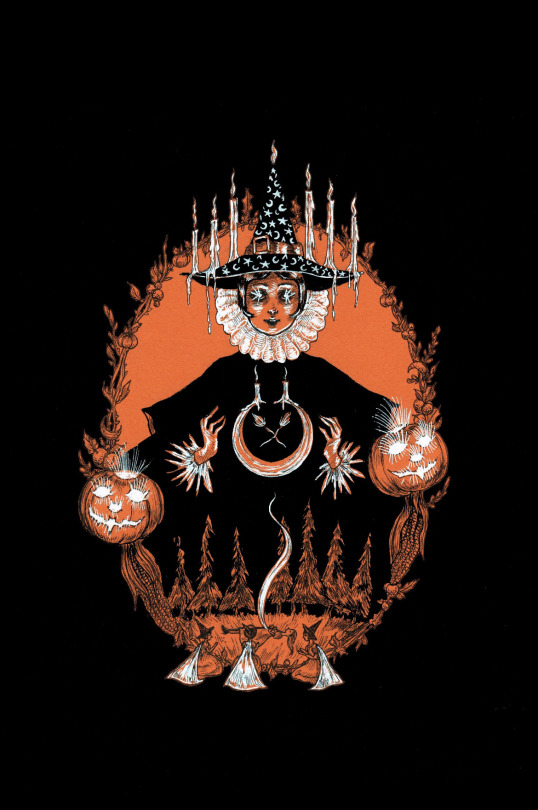

🎃✨🎃✨🎃✨🎃✨🎃✨🎃✨🎃✨🎃
SAMHAIN (🗣SAA-WYN🗣)
Other names:
Samhuin, Samain, Saman, Oidhche Shamhna, Hallowe'en, Halloween, Hallows, Hallowtide, Shadow Fest, Allantide, Third Harvest, Harvest Home, Geimredh, (Feile na Marbh), Feast of the Dead, Spirit Night, Candle Night, November Eve, and Apple Fest.
What is it?
Samhain is an old Celtic festival marking the end of the harvest season and beginning of winter (the "darker half" of the year)
What it represents
Samhain is a time when doorways to the spirit world are opened, allowing the dead to visit the living world. Some spirits were considered friendly, while others were not, and the Celts created ways to appease them.
It also marks the end of the Celtic year and the beginning of the new one and as such can be seen as an equivalent of New Year's Eve as we know it.

When is it celebrated
It is held on 1 November but with celebrations beginning on the evening of 31 October, since the Celtic day began and ended at sunset
Who to honour
Traditionally because this festival is associated with those who no longer walk this realm in a physical form, ancestors, family members, elders of the faith, friends, pets and other loved ones who have passed on are appropriate beings to honour.
Other sprits to worship
In the case you want to explore other spirits to worship, any death deity would be appropriate for example, you may feel compelled to leave out an offering to Hades at this time of the year. You can also worship the earth itself, as we approach this time of the year many plants begin the end of their yearly cycle, this is the perfect time to take a moment to appreciate the beauty in that part of the cycle.
How to celebrate
There are many things to do to honour ancestors and not just the human ancestors but the earth ones and the animals as well, this may manifest in many ways.
Some popular ways to celebrate this festival are
dancing,
feasting,
taking nature walks,
Ancestor Stories,
cemetery visits,
Bonfire Magic.
and building altars to honour the ancestors
These are not the only activities, there are many more that I could list and many more points I could touch on, but I wanted to keep this post really easy/friendly and not to overwhelming,
I hope to at some point tomorrow get to draft up a “Samhain correspondence” post to go along with this one🥰 if there is anything else/ or any questions you have that you’d like me to touch base on I’m more than happy to do my best to answer🥰
Merry meet! B ~Phae
#samhain#witchblr#witchcraft#beginner witch#witchy tips#baby witch#witch#witchcraft 101#grimoire#book of shadows#digital grimoire#sabbat celebration#witches sabbat#witch craft
382 notes
·
View notes
Text
I’m aware a lot of people won’t care to read this but I need to get it out.
Something that annoys me is how SJM literally uses Pagan Sabbats with a twist.
Here is the Wheel of the Year for any of you who aren’t familiar with the Sabbats:
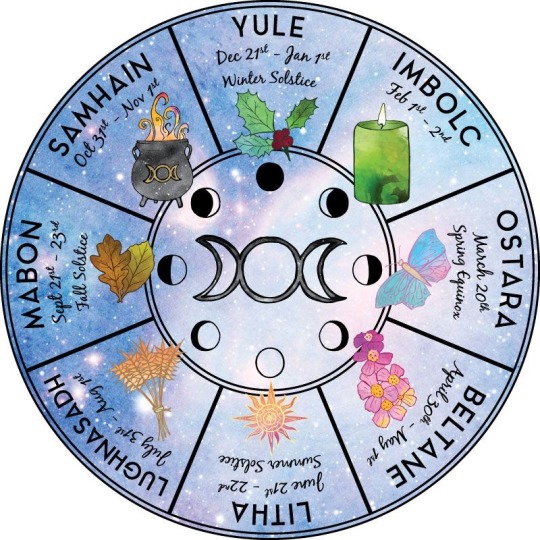
In ToG, sjm uses Yulemas. She also uses Samhuin which is a direct play on the Pagan holiday Samhain (which is more commonly known as Halloween).
Furthermore, something that annoys me even more, is this emphasis on Feyre’s birthday being the Winter Solstice. It’s ingrained so much into the book. I wouldn’t be annoyed if it wasn’t made out to be really important when it isn’t.
Sjm also uses Ostara/Spring Equinox (starfall) — which aren’t even remotely similar — and Litha (summer solstice). I’ve read all of her books up till CoM so I could be missing more.
I could go into an analysis on how she represents Yule if anybody wants to see but the gist is that it’s not just about gifts, and while we hear about decorations and preparations being put up, in the books, we actually don’t know what else happens. It’s very vague and not at all how I think she should be showing it. Paganism has been persecuted for years, the least she could do is show the world part of its beauty.
I feel disrespected (and perhaps some Pagans think otherwise) that some of these Sabbats are used or twisted for these books — that some readers will associate it with sjm books and not where she took them from. When I was celebrating Yule last year, someone commented on it being Feyre’s birthday and I got the vibes that they thought I was celebrating a fictional holiday.
Additionally, Feyre’s spine tattoo (as subjective as the artwork is) of the moon phases is also associated with paganism. In fact, there was one incident in which a fan thought that a woman with a spine tattoo described like Feyre’s was a fan of the book. This makes me extremely annoyed because many pagans often get this tattoo. No, that symbolism is important to us — I’m not going into the logistics here, you can Google moon phases and paganism for more information or The Triple Goddess.
Now, I don’t expect fans to know where the origins of all of the things I have mentioned come from. My problem is with how sjm uses it and presents it within the books.
I also think that she could’ve at least done it accurately if she was dead set on using Sabbats in her books.
If you’re confused as to why I feel angry, annoyed and disrespected; try and imagine something important and special to you taken away or used in a way that misrepresents what it truly is. It’s not nice, is it?
I’m aware that Paganism isn’t widely-popular religion so if you have any questions about this, feel free to comment or message me.
And before you ask:
Not all of us are devil worshipers
Not all of us sacrifice animals
Not all of us dance around fires naked
A lot of us are great at meditation
86 notes
·
View notes
Text

Pronunciation Of The Wiccan Holidays
☽⦁──────── ⦁⧊⦁ ────────⦁☾
The names that are generally used to denote the Wiccan sabbats (as well as festivals of many pagan traditions) come from Gaelic (both Scots and Irish), Welsh, Norse, and Anglo-Saxon. There are variations of pronunciations for each one.
☽⦁──────── ⦁⧊⦁ ────────⦁☾
Samhain (31 Oct)
Irish Gaelic for "summer's end." The standard Irish pronunciation is "sow-in" with the "ow" like in "cow." Other pronunciations that follow with the many Gaelic dialects include "sow-een" "shahvin" "sowin" (with "ow" like in "glow").
The Scots Gaelic spelling is "Samhuin" or "Samhuinn." There is no linguistic foundation for saying this word "samhane" the way it might look if it were English. When in doubt, just say "Hallows" or even "Hallowe'en."
☽⦁──────── ⦁⧊⦁ ────────⦁☾
Yule (21 Dec)
Norse for "wheel." It's pretty much pronounced just like it looks, although if you want to make a stab at a Scandinavian sound, it'll be more like "yool" and less like "yewl." This is the winter solstice.
☽⦁──────── ⦁⧊⦁ ────────⦁☾
Imbolg/Imbolc (1 Feb)
Irish Gaelic for "in the belly." Pronounce this one "IM-bullug" or "IM-bulk" with a guttural "k" on the end. Other names include Candlemas; Brighid (pronounced "breed"), who is the Irish goddess whose festival this is; and Oimelc (pronounced EE-mulk), which means "ewe's milk" in Scots Gaelic.
☽⦁──────── ⦁⧊⦁ ────────⦁☾
Ostara (21 Mar)
Saxon name for a maiden goddess of spring, loosely connected to Astarte and Ishtar. This one's easy -- "o-STAHR-uh." Other names include Eostre (say "OHS-truh" or "EST-truh"). This is the spring equinox.
☽⦁──────── ⦁⧊⦁ ────────⦁☾
Beltane/Bealtaine (30 April)
Irish Gaelic for either "fires of Bel" or "bright fires." If you want to try it in Gaelic, you can say "bee-YAWL-tinnuh" or "BELL-tinnuh." Unlike Samhain, this word can within the linguistic structure of its language of origin be pronounced like it looks -- "BELL-tane" -- without totally abandoning its original construction. Other names are Walpurgisnacht (vawl-PUR-gis-nahkt) and May Day.
☽⦁──────── ⦁⧊⦁ ────────⦁☾
Litha (21 Jun)
Norse or Anglo-Saxon for "longest day." You can say this one just like it looks, or you can try for a Scandinavian sound and say "leetha" with the "th" more like a "t." This is the summer solstice.
☽⦁──────── ⦁⧊⦁ ────────⦁☾
Lughnasadh/Lunasa or Lammas (1 Aug)
The first is Irish Gaelic for "festival of Lugh" (a major Irish deity); the second is Anglo-Saxon for "festival of the loaves" ("hlaf-mass"). Don't panic at that spelling; the second (which is modern Irish as opposed to old Irish) tells you all you need to know.
Say "LOO-nah-sah." (Some people maintain that the Scots dialect says it "LOO-nah-soo.") Lammas is just like it looks, "LAH-mus."
☽⦁──────── ⦁⧊⦁ ────────⦁☾
Mabon (21 Sep)
This is believed to be a form of the Welsh word for "son." Therefore, it would probably be pronounced "MA-bon" with the "a" like in "mass." However, most Wiccans and pagans say "MAY-bon." This is the autumn equinox.
☽⦁──────── ⦁⧊⦁ ────────⦁☾
Article Source : https://clubs.ncsu.edu/spm/FAQ/11pronounce.html
Image Source : https://www.instagram.com/p/B4aX5vVHBX_/?igshid=llpzumjzbbcb
#Wicca#Wiccan#Wiccan holidays#Wicca holiday#Witchcraft#Pagan#Pagan holidays#Samhain#Yule#Mabon#Litha#Lammas#Imbolic#Ostara#Beltane
3K notes
·
View notes
Text
Samhain, my research so far

Hi guys! I thought I’d share you my research so far of Samhain. I’ll try to include all sources I’ve used.
Keep in mind that I’m a witchling myself and some information might not be accurate, always do your own research too!
What is Samhain?
sources: learnreligions , thewhitegoddess , flying the hedge
Samhain is what we might know as Halloween, it is on the same date but there are differences. Samhain is celebrated on the 31st of October. Samhain means that the veil between the spirit and mundane world is thinnest. It is time to celebrate the cylce of life and rebirth, to reconnect with our ancestors and to honor those who have died.
Death is a part of life that is necessary and with Samhain we formally honour it. A lot of those who celebrate Samhain consider this to be the most important sabbat on the wheel of the year.
Correspondences
• Stones : Obsidian, onyx, jet, tourmaline, carnelian, amber, bloodstone, turquoise, smoky quartz
• Colors : Black, brown, orange, red, gold/yellow
• Plants : Oak, corn, hazel, mug wort, sage, allspice, catnip, mint, thyme
• Foods : Beets, turnips, apples, corn, nuts, gingerbread, pomegranates, cider, pumpkin dishes
• Scents : Cinnamon, cloves, frankincense, myrrh, cedar, sandalwood
Pronunciation
Samhain is Irish Gaelic for ‘Summers end’ and the standard pronunciation of it is “sow-in”, where sow is like cow! There are however more pronunciations due to dialects. Some pronunciations include “sow-een” "shahvin" "sowin" (with "ow" like in "glow"). The Scots Gaelic spelling is "Samhuin" or "Samhuinn”.
History
Despite being the Sabbat of death and rebirth, Samhain is not the the name of the Celtic god of Death (this is Donn). Samhain also isn’t as devilish as the claims that were made by the church, who made claims that this is the time to worship the devil, making pacts with demons, and selling souls. These claims were made to scare people into Christianity. This left such an impact that even in some more rural areas, it is still viewed as unwise to leave your home on the night of Samhain.
Samhain is the eve of the pagan New Year, the time of year to reflect over the past year and plan for the new one. This is a sabbat of death and rebirth so many people choose to focus their rituals on banishing the old and bringing in the new. Have you ever seen Halloween decor of an old crone stirring a cauldron? This comes from old European traditions where the God dies and the Crone Goddess mourns him deeply up until Yule.
Honouring your ancestors is also a big part during Samhain. Altars are often set up with photographs of the deceased with candles and offerings to honour our friends and family that passed through the veil.
Note: Make sure there is no living person on a photograph if you put it on your altar, this brings bad luck!
Another celebration that you can compare this to is The Day of the Dead or Dìa de Muertos, a Mexican holiday celebrated on November 2nd. A way to also celebrate this is to hold a ‘dumb supper’, a dinner that is held in complete silence with an empty space as an invitation and honour for departed family.
Traditions
But where does pumpkin carving come from? The holiday itself is not evil, however there is evil in the world. To protect ourselves, our ancestors would carve scary faces into vegetables (we now use pumpkins, but turnips were also used!), and place a candle inside to ward of any harmful spirits.
Bonfires were also a big part of the traditions. Once large bonfires, called balefires, were lighted across Britain and Ireland as soon as the sunset on October 30th. The word balefire comes from the word "boon" which means "extra." These fires were lit for extra protection, containing the energy of the dead god, and lighting up the night.
The tradition of wearing masks on the night of Samhain was also an attempt to ward off evil to protect one's self from faeries and harmful spirits if you had to venture out.
Image credit: I made this myself!
#wicca 101#witchcraft 101#sabbat#samhain#OC#grimoire#book of shadows#history#halloween#tradition#correspondences
19 notes
·
View notes
Text
samhain
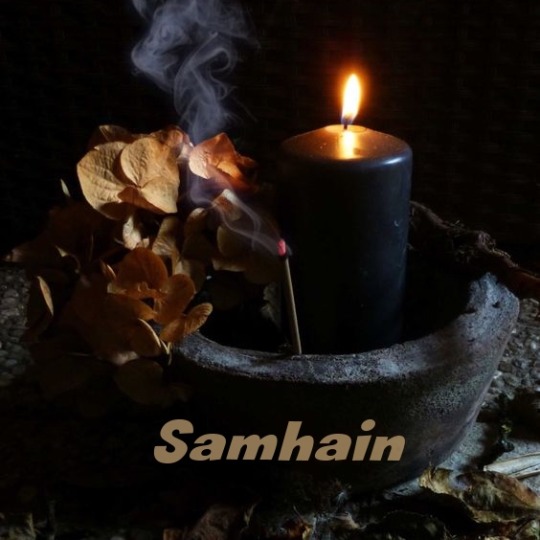

Samhain Pronunciation: SOW-in, SAH-vin, or SOW-een
October 31 – November 1
Themes: death, rebirth, divination, honoring ancestors, introspection, benign mischief, revelry
Other Names: Samhuin, Halloween, Third Harvest, Day of the Dead, Feast of the Dead (Félie Na Marbh), Ancestor Night, All Hallows Eve(the 31st).
This celebration marks the end of the growing season and the beginning of…
View On WordPress
#All Hallows Eve#Ancestors Night#Candle ceremony#candle magic#Ceremony#Day Of The Dead#Dumb Supper#Feast Of The Dead#Guided Meditation#Mantra#Samhain#shadow self#Shadow Self Meditation#Third Harvest
7 notes
·
View notes
Text
Rituale - Spaziergänge - Jahreskreisfeste
Rituale – Spaziergänge – Jahreskreisfeste
Mystische Rituale – Spaziergänge – Jahreskreisfeste
Natur – Geschichte – Mythen – Kraftorte – Rituale
Kraft Tanken, Wahrnehmungsübungen, Meditation, Achtsames Spazieren, Wyda Übungen, Rythmus der Natur erforschen, eintauchen in die Elemente….
Rituale sind Würdigungen des Augenblicks – Rituale verbinden mit dem Jetzt © Harald Koisser und Veronika LamprechtBei unseren…
View On WordPress
#Beltane#Erde#Feuer#FrühlingsTagundNachtGleiche#HerbstTagundNachtGleiche#Imbolc#Jahreskreisfeste#Kraftorte#Lichtmess#Luft#Natur#Rituale#Samhuin#Schnitterfest#Sommersonnenwende#Walpurgis#Wasser#Wintersonnenwende
0 notes
Text

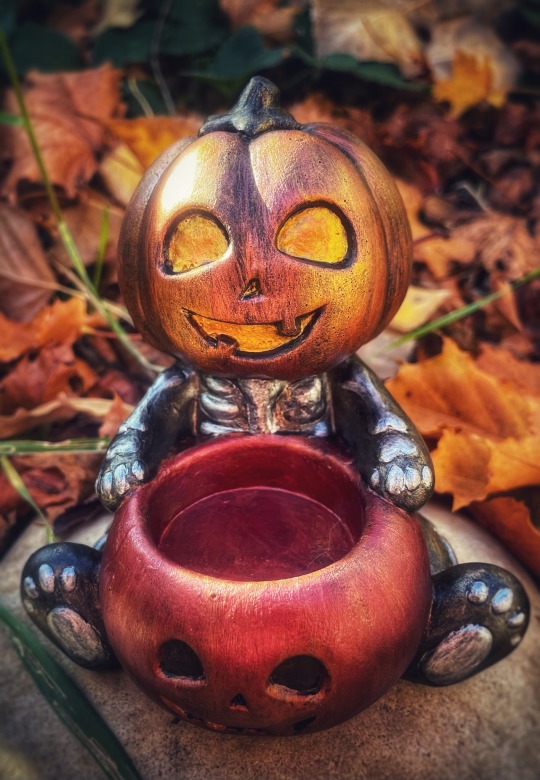
One of the odd hobbies I have is buying things from the dollar store, and repainting them. I suppose I like transforming them into something that fits me better.
In case anyone likes the results, I started by painting the whole thing black, then I coloured it using metallic acrylic paints. Lastly, I brushed on glaze to protect it(I had Sculpey gloss glaze, so I used that).
17 notes
·
View notes
Text
Samhain
Samhain
Also known as: Samhuin, Oidhche Shamhna, Halloween, Hallowmass, Third Harvest, Day of the Dead
Pronounced: SOW-in, SAH-vin, or SOW-een
Dates
31st October or 1st November (Northern Hemisphere)
30th April or 1st May (Southern Hemisphere)
Season
Autumn
Zodiac Aspect
15 degrees Scorpio
Themes
Death
Rebirth
Divination
Honoring Ancestors
Introspection
Meanings
And finally the Wheel turns to…
View On WordPress
10 notes
·
View notes
Photo

Bally’s Tale: Treasure of Tara… * ...Many years later, in the reign of Art-mac-Conn, at the festival of Samhuin, the Master Poets came to the feast, as was their custom,
0 notes
Text
Halloween Fear - How Far is to Far
When October finally comes around excitement flourishes for the long awaited holiday season. People start thinking about their traditions and decorations. This time is supposed to be about family, reliving traditions, cooking, and creating memories. Although there are a few million of us that love the holidays and the fun they may bring, but what if there are people that hate or fear what is to come.
People have fear embedded as a tactic to protect us, It tells us to fight or flight. Halloween is a holiday that is supposed to bring forth scary things while we collect candy. Although Halloween was originally a Celtic festival called Samhain where fires were made and people would dance with costumes to ward off ghosts. The Celts who lived 2000 years ago used October 31 to mark the end of the harvest and summer and the start of the cold, dark winter which is often associated with human death. The celts believed that the night before the new year the veil between worlds was thin.
Although Halloween is now more of getting candy or jazzing up tricks and decorating with fake cobwebs and skeletons, there are people who are absolutely terrified of Halloween. Samhainophobia is the morbid fear of Halloween. The origin of Samhainophobia comes from the Celtic work Samhuin-meaning All Hallows Eve to Christians. Though Halloween has a lot of scary things associated with it like skeletons, black cats, vampires, werewolves, spiders and fake blood which can contribute to the phobia, the phobia is more associated with the religious beliefs surrounding it. Many people who have the phobia will have nothing to do with any Halloween actives, no trick-or-treating, no decorations, no costumes, or visit haunted houses
If a suffer is a child they might reduce to go trick-or-treating at night without a Parent and will scream or panic until they come. The child might also feel dizzy, throwing up, nausea, increased heart rate, and rapid breathing. Parents of children with the phobia should determine what causes it and help them through the fear. The child should have the choice when they want too trick or treat and if they want to be around any halloween decorations
Although Halloween is supposed now all about candy and scary movies, people wonder though life having an intense fear of it. Whether it is irrational or not it is real and is complex.
1 note
·
View note
Photo

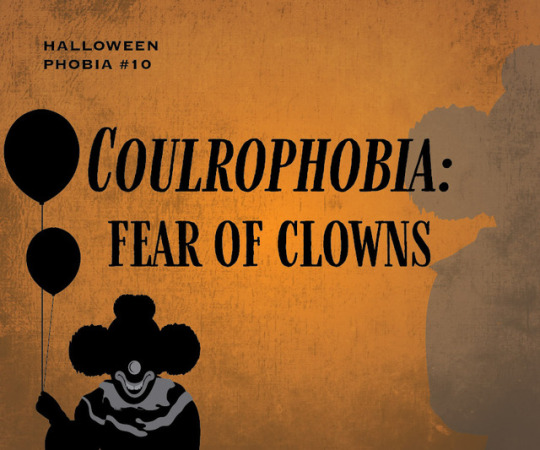


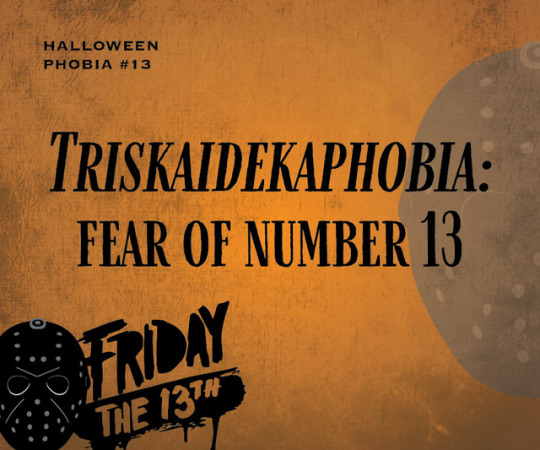
13 Trending Halloween Phobias - Part 2
Believe it or not, the phobia of halloween does exist. Whether there are some of us who love to watch scary movies or simply love wearing horrifying costumes to attend haunted houses, there are those people who are afraid and hate anything associated with halloween.
Samhainophobia is the fear of Halloween or the fear of the festival of the dead. The term Samhainophobia originates from 'Samhuin' meaning summer's end. The Samhain festival was celebrated by the Celts for marking the transition between summer and winter.
To learn more about it click here
3 notes
·
View notes
Photo

Samhuin @lou_ontherocks https://www.instagram.com/p/B4SyE0vgsrC/?igshid=1ewplu4cziqdd
0 notes
Photo

Samhain~Halloween — ravenhawks’ magazine Samhain is pronounced sowen, soween, saw-win, saw-vane or sahven, but not sam-hayne. Other names for Samhain include Samhuin, Samain, Saman, Oidhche Shamhna, Hallowe’en, Halloween, Hallows, Hallowtide, Shadow Fest, Allantide, Third Harvest, Harvest Home, Geimredh, Day of the Dead (Feile na Marbh), Feast of the Dead, Spirit Night, Candle Night, November Eve, Nutcrack Night, Ancestor Night […] Samhain~Halloween — ravenhawks' magazine
0 notes
Text
Samhain: Halloween, Winter Nights, All Hallows Eve October 31st Kicked Out of Heaven Vol. III Coupon Code for 33% Off: CHRISTMAS
Samhain: Halloween, Winter Nights, All Hallows Eve October 31st Kicked Out of Heaven Vol. III Coupon Code for 33% Off: CHRISTMAS
Excerpt from Kicked Out of Heaven Vol. III
Samhain: Halloween, Winter Nights, All Hallows Eve October 31st
Samhain (*Note: Samhain is pronounced sowen, soween, saw win, saw vane or sahven, not sam hayne)
Other names for Samhain include Samhuin, Samain, Saman, Oidhche Shamhna, Hallowe’en, Halloween, Hallows, Hallowtide, Shadow Fest, Allantide, Third Harvest, Harvest Home, Geimredh, Day of the…
View On WordPress
#americanhorrorstory#catholicism#disease#donaldtrump#knight#middleage#oldeurope#plague#theundead#thewalkingdead#frankenstien#History#vampire#werewolf#zombie
0 notes